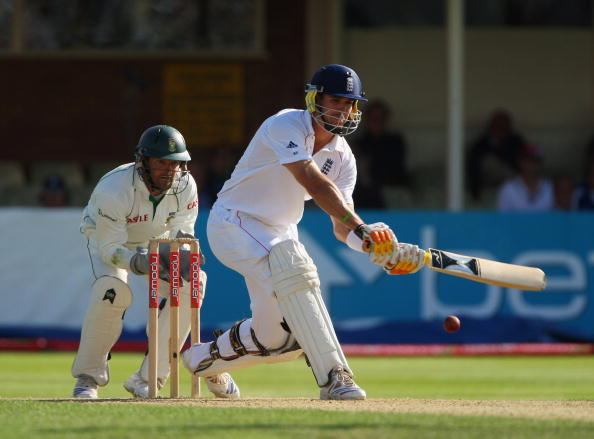Coaching has changed in the past decade or so with more onus being on players to work things out for themselves, but we must not forget that hard work is still key to success.
Modern-day coaching is all about allowing for the player to find their way of doing something. Of course we learn by our mistakes over time, but it’s crucial that you still have the hours of drills.
It’s all very well letting a player sort himself out, especially with the fast pace of life, but it needs to be remembered that there’s never a quick fix. If there’s an issue with technique, it’s not going to be sorted in just a half-hour session, or even ten sessions.
Virat Kohli is the one to look up to at the moment. Yes, he’s scoring a bucket load of runs, but it’s because of what he does in training. Kohli will spend three hours in the nets getting himself prepared.
When I was at Kent, Rahul Dravid came over and he was exactly the same. As kids we all batted for long periods of time and our old coaches were all about drills, drills, drills. But that seems to have gone out of the game slightly.
Duncan Fletcher always said ‘you practise your skills until you don’t get them wrong, not until you get it right’. Obviously, we are not machines and we do get things wrong in the pressure of the game, but if you’ve practised something so much then you have the confidence to pull it off when needed.
We all get our execution of a shot wrong occasionally, but we try to practise so it’s not a case of you playing the wrong shot, it’s just mis-timing or being deceived by a good ball.
It’s important that we don’t lose that drilling in as a modern-day coach. Players are told to go and play your own way, and that’s fine, but in the practice arena it’s different. You do what the coaches think you should do.
The reason Kohli, AB de Villiers and Jason Roy, for example, have such a wide array of shots is because they bat and bat and bat and find out their best options. They don’t just turn up on match day and decide they want to hit a reverse sweep having never practised it. It’s not all instinct.
Kevin Pietersen would have hit his switch hit hundreds, if not thousands, of times in the nets before bringing it out in the game. I was the same with reverse sweeps. For me to play it in matches took peer pressure off my teammates, especially the spinners.
They’d say to me ‘come on Nico, you’ve been middling them off us in the nets for months, it’s time to do it in a game now’. But I wanted to make sure that even in county cricket, I was confident of doing it and to ensure I had the ability to pull it off.
I’m all for players working things out for themselves, but the more you train, the easier it becomes to see what you’re doing wrong and what you need to change. Repetition is the key, that makes it engrained in the mind.
Modern-day cricket is all about being quick, hitting a Test century off 120 balls, but that’s not what is needed. You need to groove the skill and iron out any creases.
Ultimately, if you want to be one of the best, you need to work hard. It’s not always the most gifted that are the best players. It’s those that grind and drive and really understand their game. You have a long career, so take some time to practise.
You don’t need to be playing all winter in Australia. A lot of guys now go to India to work on their tactics against spin, and that’s what is needed.
This piece originally featured in The Cricket Paper, February 17 2017
Subscribe to the digital edition of The Cricket Paper here












